Improper House Overhead Electric Service Locations & Safety Tips
A large portion of the City of Chicago and the Chicago land area uses overhead electrical service cables, which are much quicker and easier to install than digging underground.
When remodeling, upgrading, or changing the house exterior, we often forget to consider that some of the components that used to be safe prior to the completion of our new project may become quite dangerous when we’re finished. One of those components is an electrical service connection to our property … you know, those thick cables, often hanging above the backyard (even if your electrical service is underground, please keep reading – maybe some day you’ll have a chance to give your friends good advice).
The minimum height requirement for those overhead electrical service cables is 10’ above any walking surface (sidewalks, yard, stairs, decks, patios, etc. – things that are not accessible to vehicles), which also extends 3’ to the side of balconies and decks.
Below are a couple of typical scenarios from Chicago land backyards:
When adding a deck, stairs, balcony or any other structure elevated above the ground, you have to take into the consideration of electrical service cables attached to your house, garage, and / or suspended above the ground. It might, of course, become an additional cost to the project, but besides being a law, it is a serious safety issue, and one which will most likely create a problem when selling your house.
So remember – electrical cables and their connection to your house must be at least 10’ above any walking surface. In some situations (picture with a power line located next to the second floor balcony guardrail), instead of relocating the electrical service connection to your house, it might be possible to build a protective screen / wall (picture with a power line cables behind the wire-mesh screen), in order to prevent someone from accidentally touching high voltage cables – you’d have to check that with your local building department / electrical inspector.
- Electric meters are required to be installed between 44”-66” from the ground (that 22” differential is a local / utility’s call)
- There should be a minimum of 36” of free space in front of the meter
- The meter should be within 30” of open space on the wall (it might be 10” to the left and 20” to the right from the center of the meter, as long as the total is 30”)
When doing any alterations on an exterior, make sure that you keep those dimensions in mind and avoid situations like the one on my picture. Utility company will most likely require relocation of the entire electrical service or removing of the deck section.
- Installing a new window where there was none before? – keep in mind that the house’s electric service cables and their connection must be at least 3’ from the bottom and both sides of the window opening
Building a new garage behind the house and converting part of the side yard into a driveway? – if the driveway runs along the wall with an electrical meter installed on it, you might need to relocate the house electric service to a different area, so it doesn’t get accidentally damaged by the passing vehicle (the garage on this picture is old, and electrical service might not need to be relocated).
If your house’s electric service cables are above that new driveway, the minimum height requirement would be now 12’ instead of 10’ for the walking surfaces.
- Replacing your exterior wall finish – make sure that the conduit and the power lines are safely secured to the house wall. Siding installers might forget to put all the brackets back where they belong.
Whatever changes you’re making around your property, you should always bring everything associated with those changes to the current, required in your jurisdiction code.
By the way, isn’t your house electrical panel in the bathroom or clothes closet?



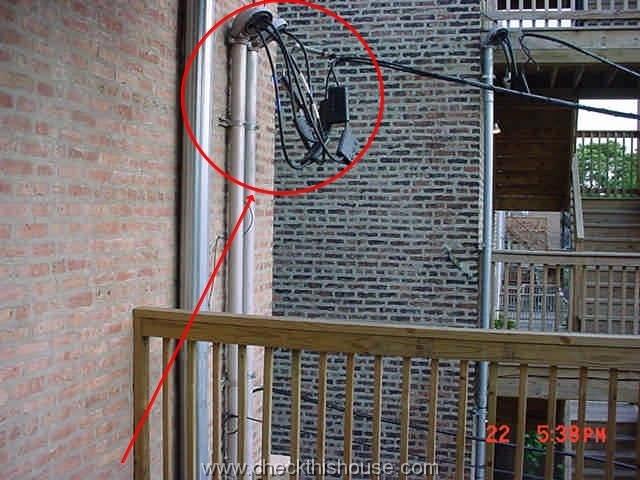
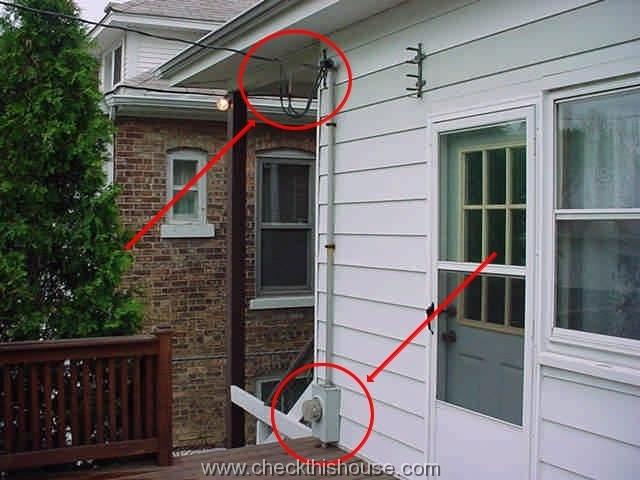
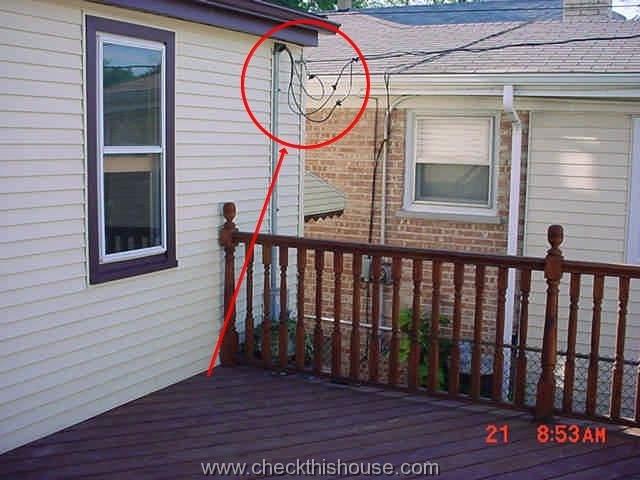
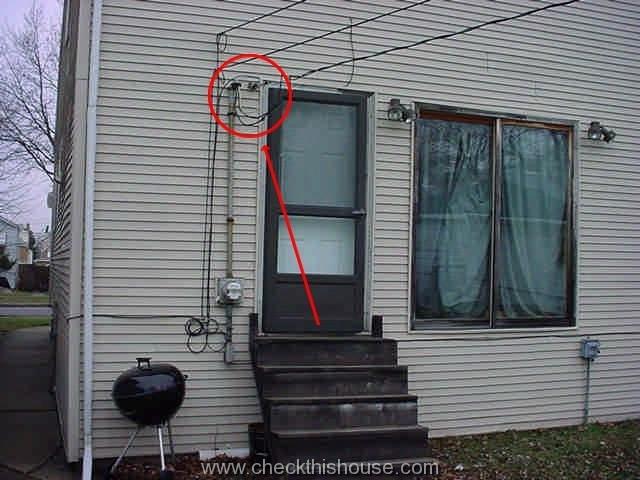
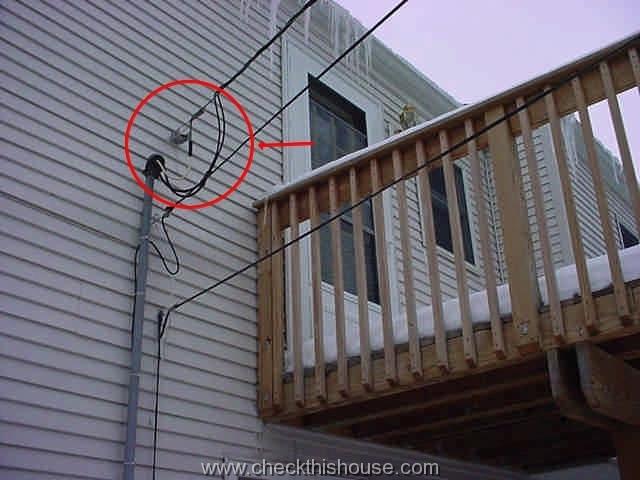
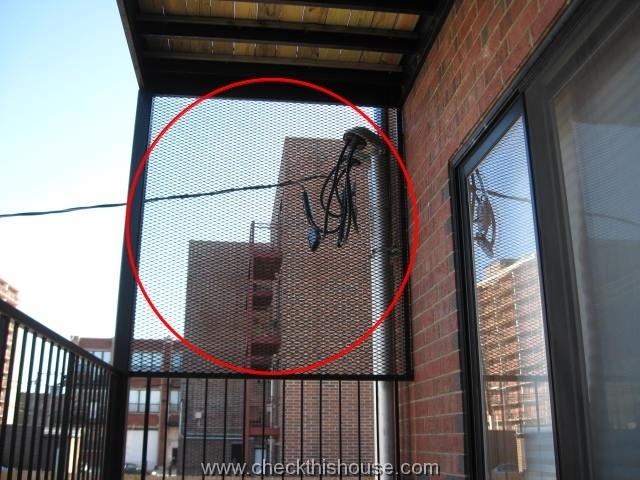
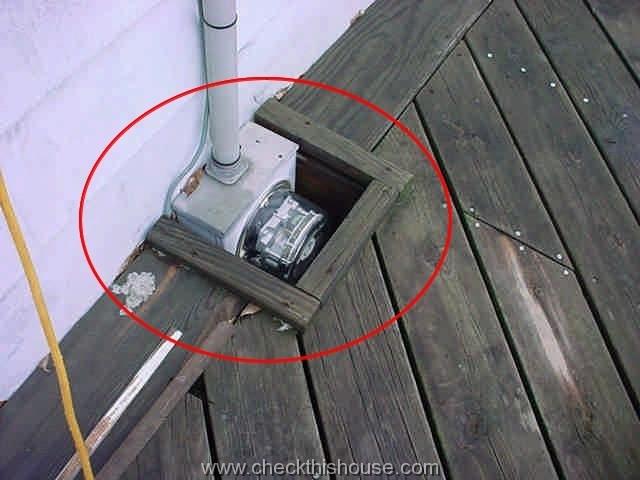
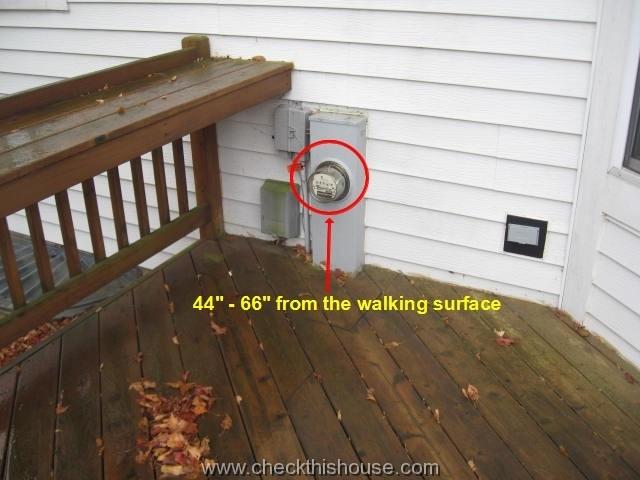
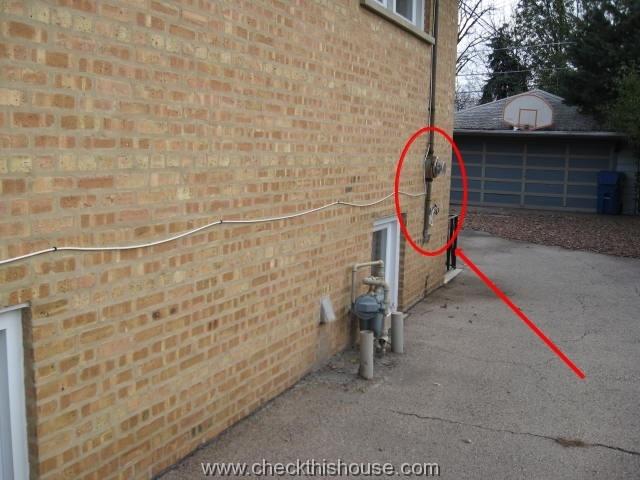
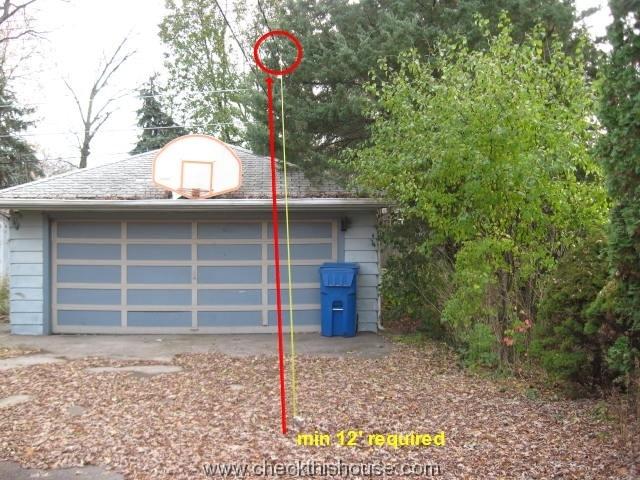
Comments are closed.